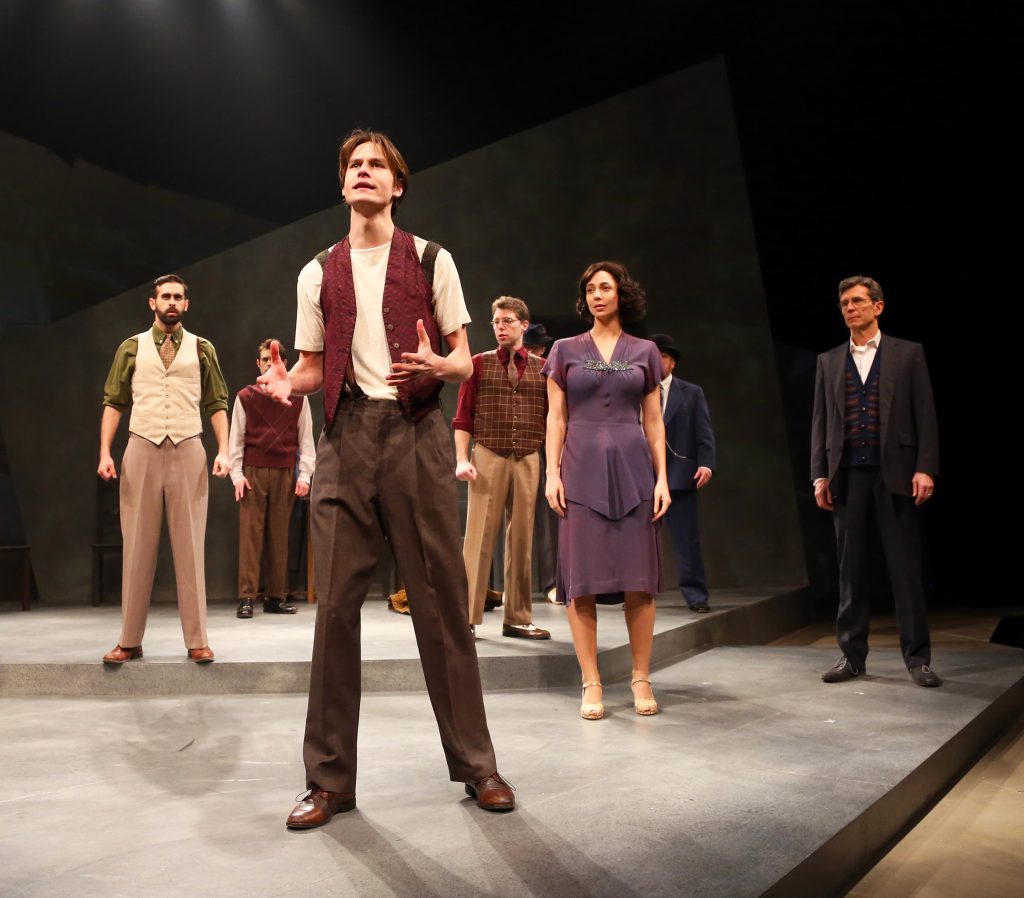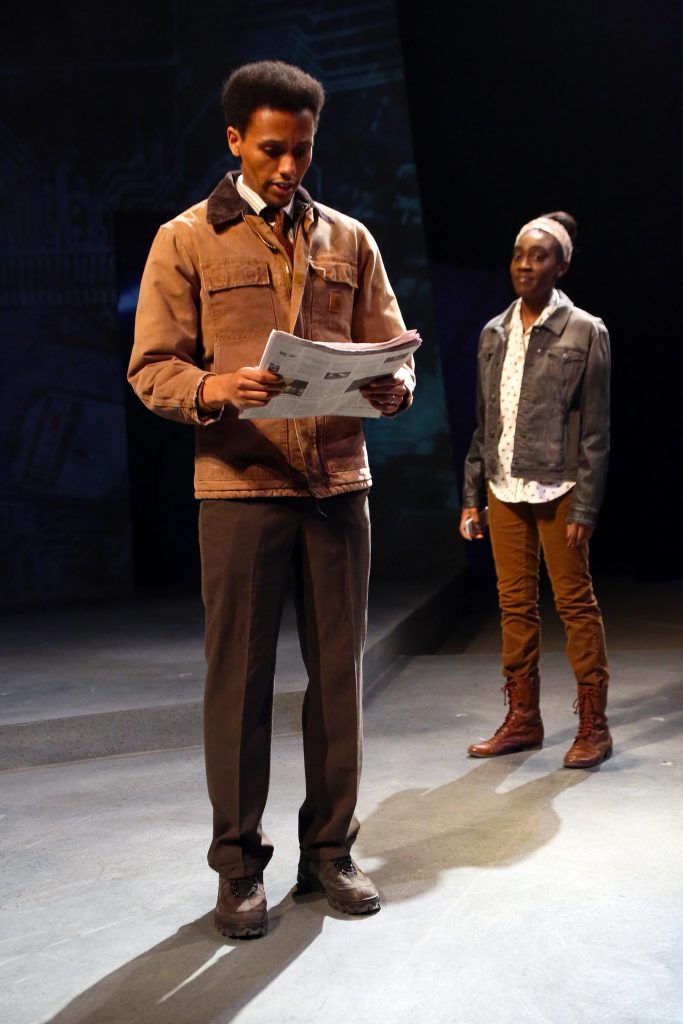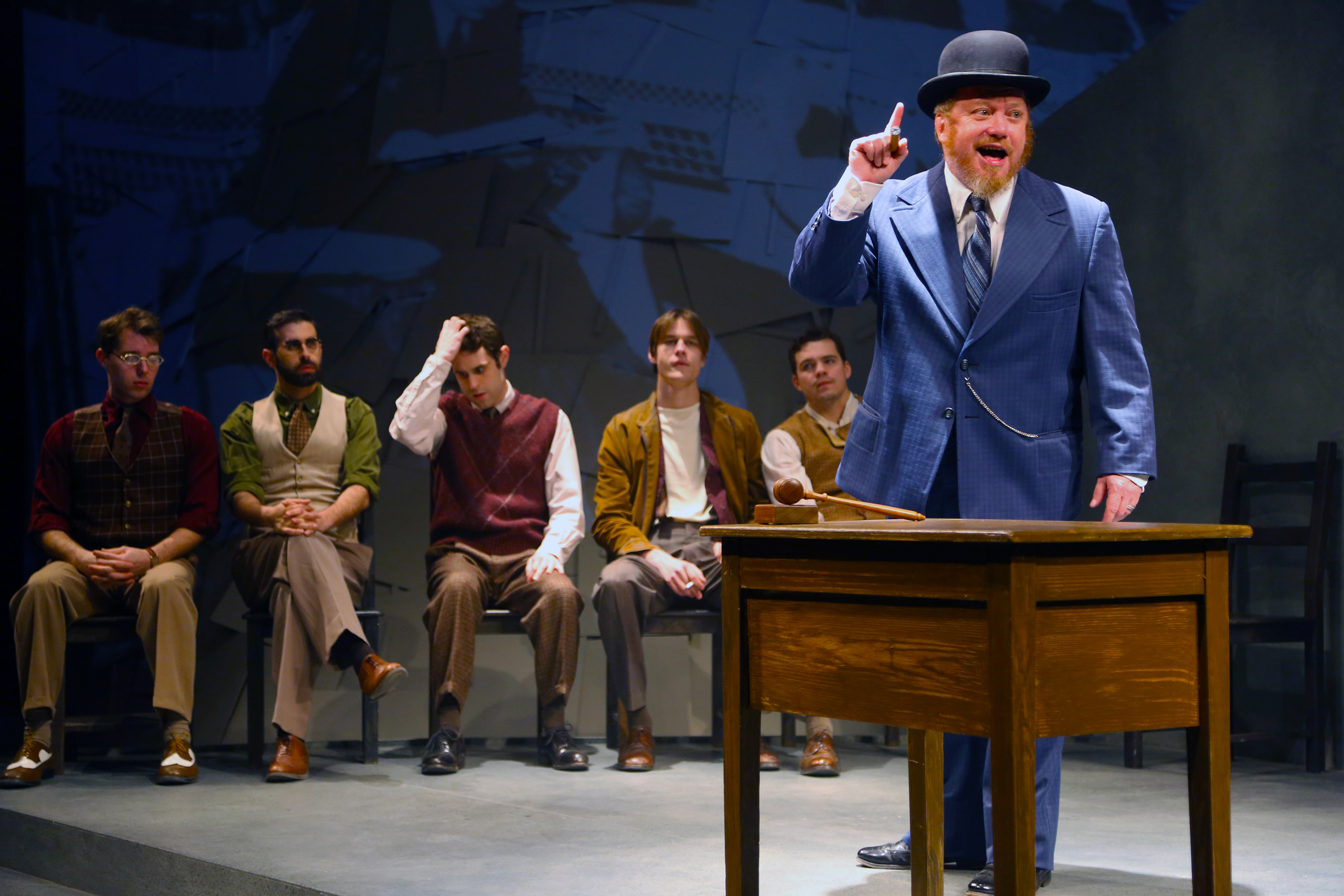When he begins to think about a play he will direct but has not written, playwright Michael Bradford feels like he is reversing his usual work processes.
“It’s a little backwards. I’m reading the play for enjoyment, but pretty soon I’m trying to deconstruct the play to see how it all fits together,” says Bradford, who is directing two one-act plays in his debut as artistic director for the Connecticut Repertory Theatre, Feb. 23 through March 5 in the Nafe Katter Theatre. “When we get into the rehearsal process, I try to add that layer of life on top of the intellectual understanding. I love both processes quite a bit.”

Bradford, who became head of the Department of Dramatic Arts last year, is directing “Waiting for Lefty,” the Clifford Odets play set in 1935 New York City that centers on a meeting of cab drivers planning a labor strike during the Great Depression. He also is directing a curtain closer by UConn alum Levi Alpert ’15 (SFA), “Severance,” a new one-act work that addresses similar themes of making choices. Each work includes a series of vignettes. The original “Lefty” production used blackouts between each individual scene, but the CRT production will not.
He says he is not generally a fan of using the blackout. “I try to find a way to move theatrically from one moment to the next without really having to take the audience out of the play and bring them back in. Because the Katter [Theatre] is so intimate, I want to get into the world and stay in that world for the time that I’m in that theater. It’s in my structural focus to move the play around the stage and go from one world to the next.”
He says when “Waiting for Lefty” was first presented on Broadway by the Group Theatre, Odets was asked by the theater company to write a one-act curtain raiser to precede it. For the CRT production, Bradford felt there was no need to set the stage for the Odets play, but thought there was an opportunity to address the play’s issues in a more current presentation afterward.
“We really started with two plays sitting on the table, and they didn’t have an inherent relationship,” Bradford says. “The more I dug into the plays, the more I began to think about kind of a spine, or a metaphor, that was related to in both plays. We’re following a lot of the same issues, themes, and problems that ‘Lefty’ had. Some of the actors are in both plays. They begin to see them connected in lots of different ways. The more we rehearse, the more they feel like one play.”

Leading the cast are veteran actors Michael Lewis and Robin Haynes, who have performed in New York City, major regional theaters, television, and film. Lewis was Carson in the original cast of Horton Foote’s Pulitzer-Prize winning “Young Man From Atlanta,” and in featured acting roles at the Metropolitan Opera. His television and film work includes “Blue Bloods,” “Law and Order,” and “Billions,” and the feature films “Darrow” and “Signs of Life.” Haynes’ Broadway credits include the original cast of “Blood Brothers” and “The Best Little Whorehouse in Texas.” He performed in the national tours of “My Fair Lady,” “Buddy,” and “Jekyll & Hyde,” and his Off-Broadway credits include: “Collaborators,” “The Return of The Prodigal,” and Billy Bishop Goes To War.”
Bradford, a professor of dramatic arts whose work as a playwright is performed around the United States and in London, says CRT productions such as those presented this year reflect how contemporary theater is evolving, and he wants to continue down that path. He says CRT has established itself as a regional theater, not just a university theater, but the challenge is to stay relevant.
“We have, and want to keep, this wonderful reputation in the world of theater,” Bradford says. “What do we do to make sure we are relevant in how we produce and direct the kind of stories we want to tell, and the kind of training we give our students?”
For example, as more folks are auditioning on video and then being called in, students need to be prepared for that reality. Another issue is to recognize who the contemporary writers are that the department needs to know and support. Here, Bradford taps into his experience as a writer. “That’s always been the biggest thing for me,” he says, “not to do one production at a theater, but to create a relationship that continues to come back to that theater.”
He notes that the Department of Dramatic Arts has resources in the School of Fine Arts not readily available to most other theater programs, including departments of Art, Digital Media Design, Music, and Puppet Arts that when utilized can “explode a play.” Plans are developing to establish a “creative incubator” to bring together the various resources within the School to collaborate on plays. “We want to see how we can take advantage of all these elements we have,” Bradford says.
Discussions are also taking place with several regional theaters about collaborating with the Department of Dramatic Arts to provide internships for students to prepare for positions such as stage designers, stage managers, and assistant directors.
Bradford says the department aims to create a national presence for its students, so that when they graduate they have relationships across the country, not just in New York or Chicago.
“All of these possibilities are on the table for us,” he says.
CRT performances of “Waiting for Lefty” and “Severance” will take place at the Nafe Katter Theatre, 820 Bolton Road, Storrs, from Feb. 23 through March 5. For more information go to crt.uconn.edu.



